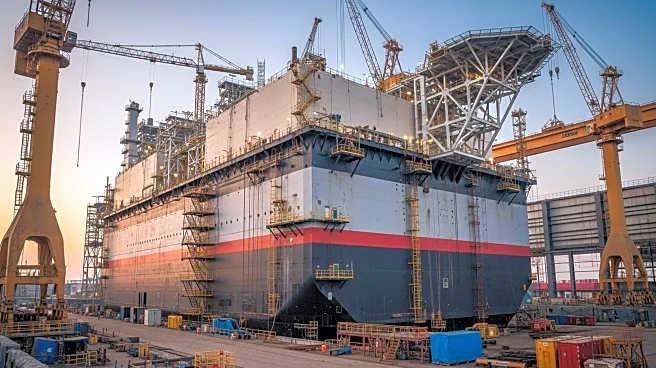What's Happening?
Drydocks World, a division of DP World, has been awarded a contract to construct the world's largest Floating Liquefied Natural Gas (FLNG) installation. The contract was granted by Amigo LNG, a joint venture between Texas-based Epcilon LNG and Singapore-based LNG Alliance Pte Ltd. The offshore facility will consist of two FLNG units, each with a capacity of 2.1 million metric tons per annum (mtpa), and two Floating Storage Units (FSUs) for product storage and offloading. The total capacity of the facility will be 4.2 mtpa. The installation will be located off the coast of Guaymas, Sonora, in the Gulf of California, and will process gas sourced from the United States. This strategic location is advantageous for exporting gas to Asian markets, bypassing the Panama Canal. Amigo LNG plans to have its first liquefaction train operational by the second half of 2028.
Why It's Important?
The development of the world's largest FLNG installation marks a significant advancement in the LNG industry, offering a more efficient and cost-effective method for exporting natural gas. This project is expected to enhance the U.S. LNG export capabilities, particularly to Asian markets, by reducing transit times and costs associated with traditional routes. The partnership with Drydocks World ensures high-quality construction and reliable long-term performance, which is crucial for meeting global energy demands. The project also highlights the growing importance of FLNG solutions in the energy sector, providing faster project schedules and rigorous testing in controlled environments.
What's Next?
Amigo LNG has signed a long-term sale and purchase agreement with Macquarie for 0.6 mtpa of the facility's production over the first 15 years of operation. The completion of the FLNG installation and the commencement of the first liquefaction train are scheduled for the second half of 2028. Stakeholders in the energy sector will be closely monitoring the progress of this project, as it could set a precedent for future FLNG developments and influence global LNG market dynamics.













